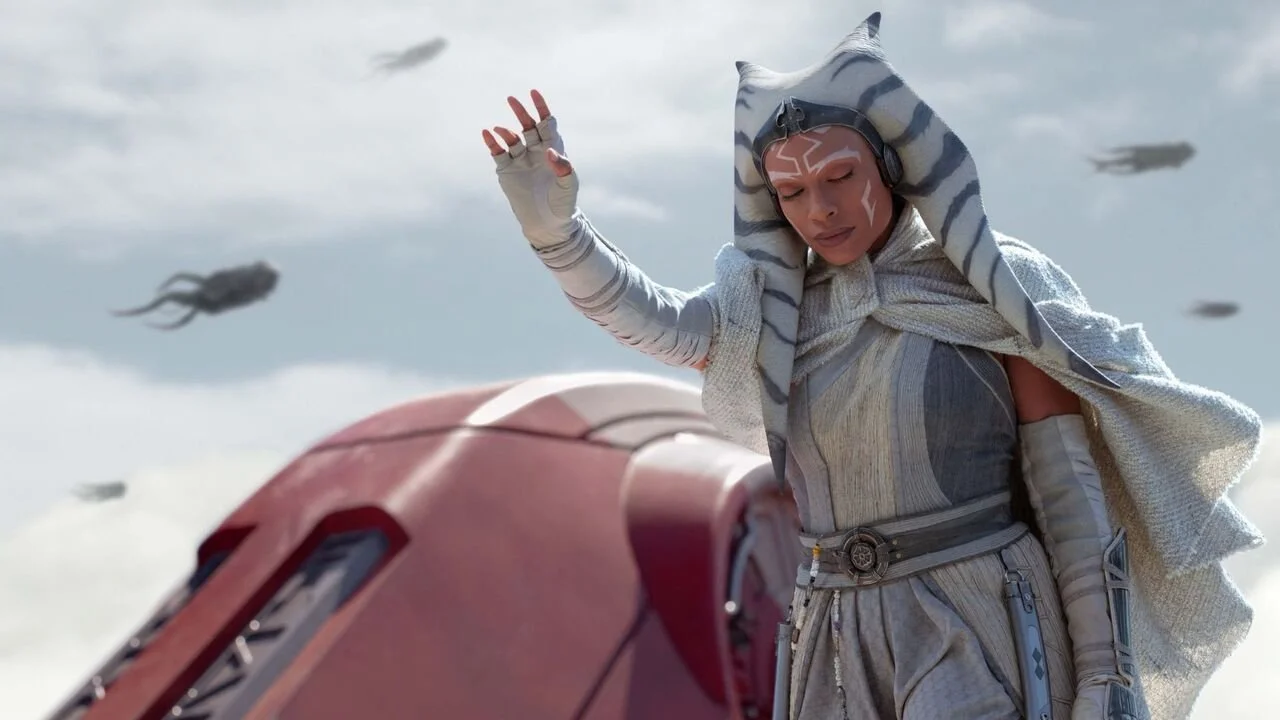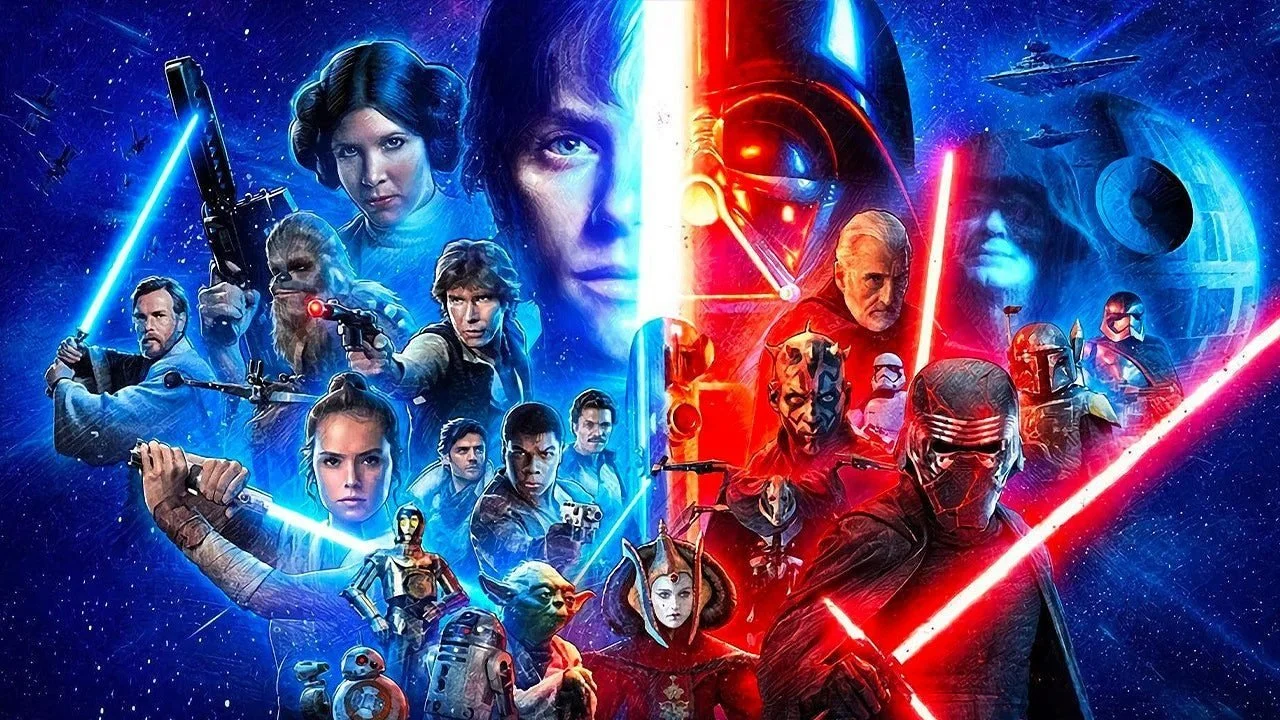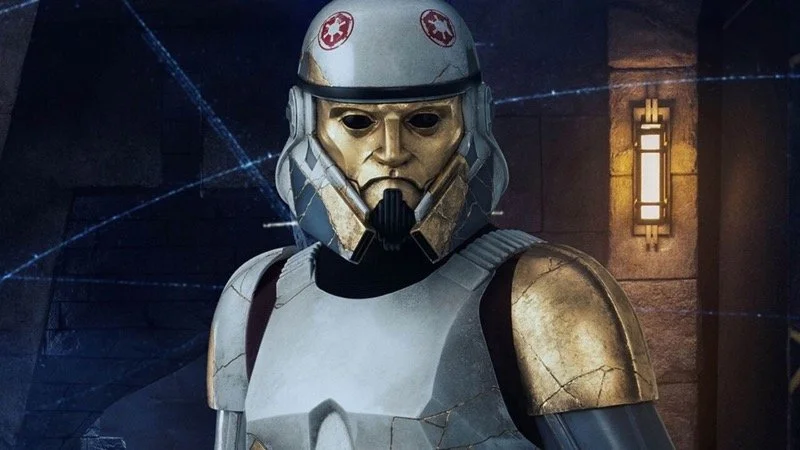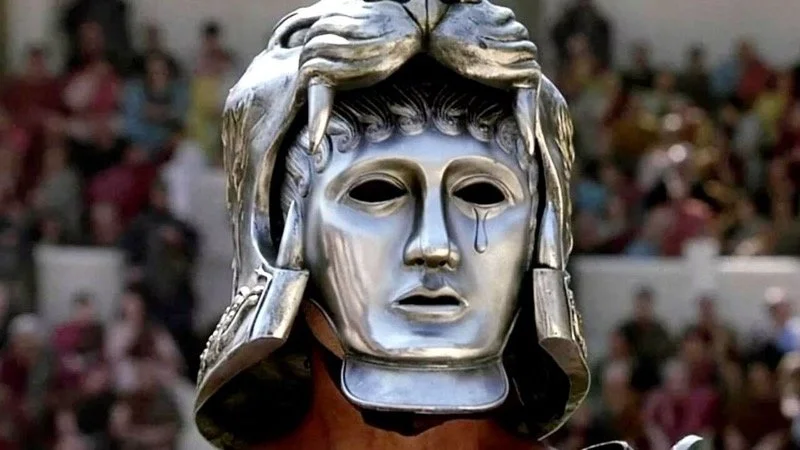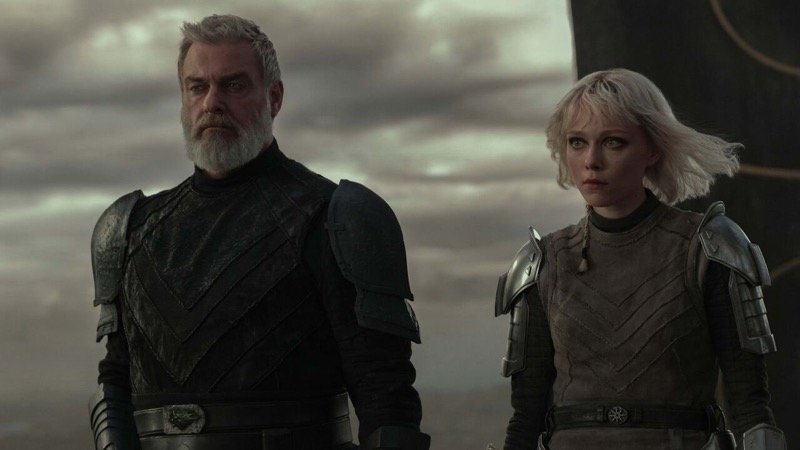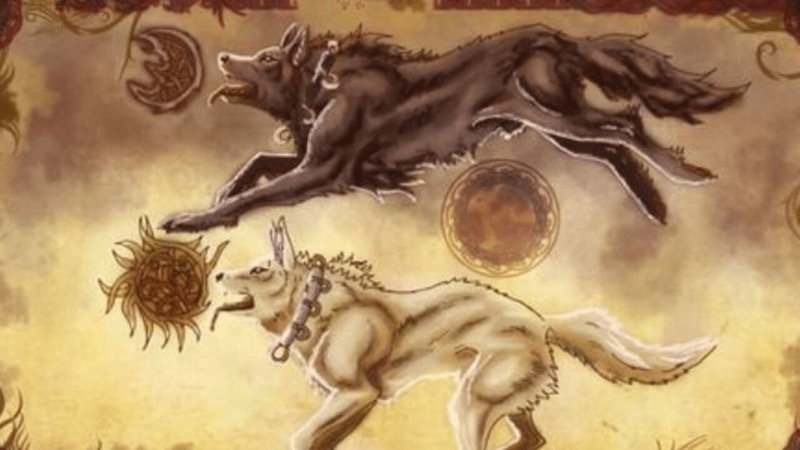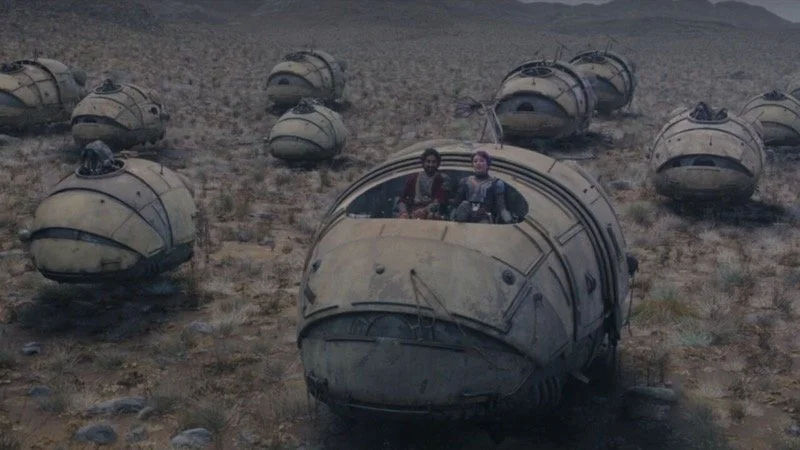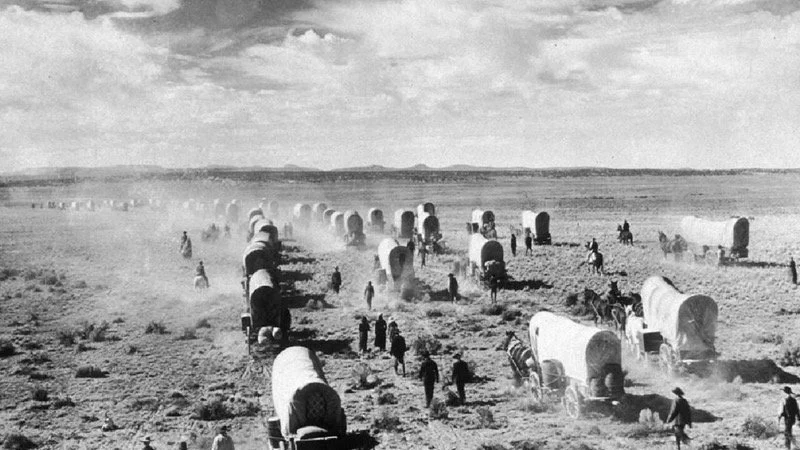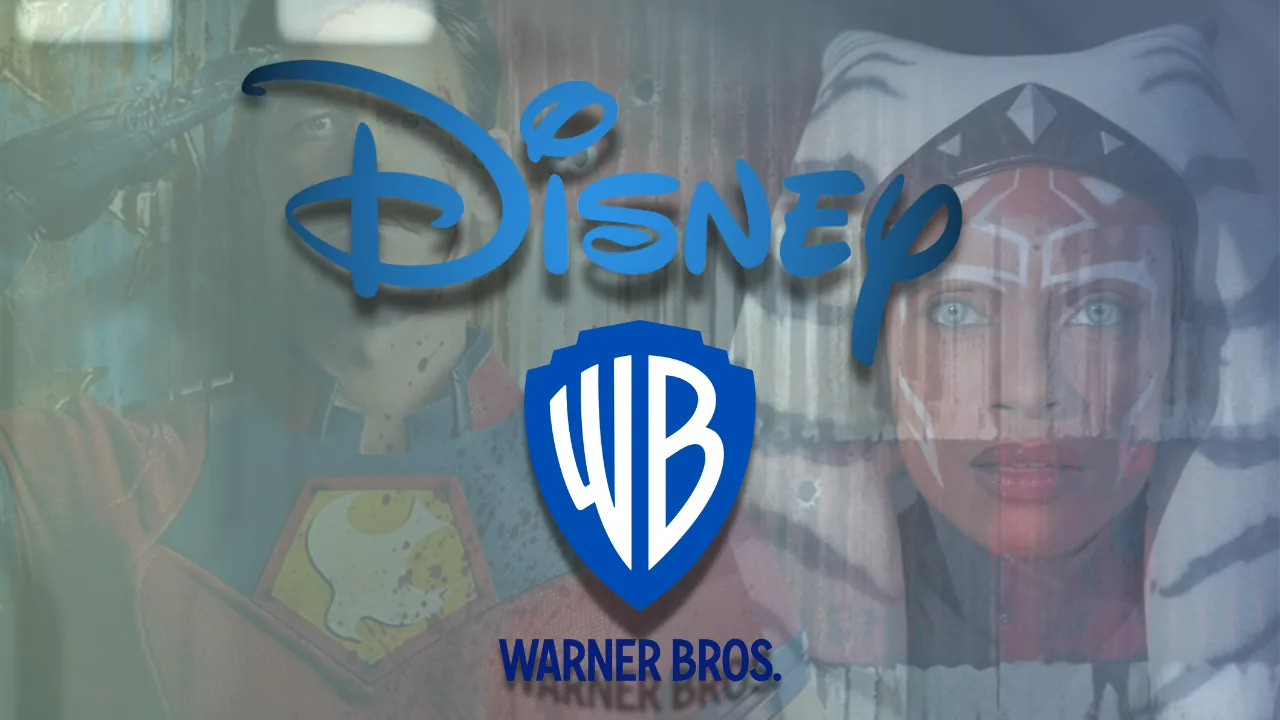All The Cultural Influences Present In 'Ahsoka'
Image Source: X
The conclusion of Ahsoka brought all sorts of emotions to Star Wars (SW) fans. Not only did viewers get to see Hayden Christensen once again as Anakin Skywalker, but they also saw - finally - Grand Admiral Thrawn in live-action. Ezra’s return to the main galaxy left a bittersweet taste on the public’s tongue. Ezra was able to see Hera again, but now Ahsoka, Sabine, and Huyang are stuck in Peridea along with Baylan and Shin. While Baylan looks for a mysterious source of power that calls to him - some speculate that is Abeloth, the so-called “Mother” to the Mortis’ gods family, Shin is trying to find herself after her master parted ways with her.
But another aspect of the show that is very interesting is the number of references not only from other SW projects - mainly Dave Filoni’s TV off-spring, The Clone Wars (2008) - but also to real-world history and cultures, such as the Medieval age, biblical characters, gladiator apparatus, Nordic mythology, the American Westward Expansion and lastly, the basis for the Jedi - Samurais. These connections made during the show only allow SW’s cultural significance to increase in both the short and long term. With that being said, let’s see how each of these points fits into the show.
RELATED:
Enoch, The Multicultural Night Trooper Captain
Image Source: X
First seen in episode six, “Far, Far, Away”, his first appearance already caught our attention. Much like the other troopers that were in Thrawn’s flagship - the Chimaera - he had his armor modified during the ten years they spent in Peridea. These alterations made by the troopers are incredibly similar to the Japanese tradition of kintsugi. In this technique, a person fixes or puts an object back together with a mix of lacquer and powdered gold, silver, or platinum. Kintsugi, which can be translated to “golden joinery”, implies that one should see flaws and imperfections as a good sign of the use and wear of an object. Enoch goes beyond this. While others only put their armor pieces back together, displaying the previously broken cracks that are now filled with gold, he replaced the front part of his shore trooper-style helmet altogether.
Instead of a regular black-and-white trooper visor with a mouthpiece and a connector for a breathing apparatus, Enoch’s modifications draw inspiration from Roman gladiators. Specifically, it resembles the Tigris of Gaul’s helmet from Russel Crowe’s Gladiator (2000). His armor was designed to look like a human face, with holes for his eyes and small openings where his nostrils would be. Tigris of Gaul’s helmet is silver, but Enoch’s is made of gold. This important part of his armor helps us distinguish him from others, thus elevating his position in the Glup Shitto list of random cool characters that fans get randomly attached to. His completely blacked-out eyes also portray an idea of something sinister behind the mask, but this will have to wait until season two. This aggressive look to his character could lead to something spectacular, or not. We shall see.
Image Source: Screenrant
His armor supports a much more discrete detail - his name. The name “Enoch” comes from Hebrew, which translates to “train, initiate, dedicate, inaugurate”. Enoch’s place in the timeline from the Book of Genesis puts him two generations before Noah and the flood, the Antediluvian period. He was also presumed to be 365 years old, coming only 57 years after the death of Adam (yes, that one). Consequently, when we take into consideration his name and the age he died (according to the New Testament), Enoch’s character can be important somehow. This, however, does not support that he is some sort of higher entity and that he is more powerful than a Jedi. Filoni is known for messing with the fanbase, just like he did with Marrok early in the season.
The Medieval Knights Of Star Wars
Image Source: X
Baylan Skoll used to be part of the Jedi Order during the Clone Wars and even knew who Anakin was. Thirty years after that, Baylan and his apprentice - Shin Hati - are now mercenaries who serve Morgan Elsbeth. Skoll’s true allegiance does not reside in Elsbeth or Thrawn, but in a higher power, one that seeks to control. Hati and him both can use the force and are skilled in lightsaber combat, abilities they have displayed while fighting both Ahsoka and Sabine. But if most Jedis dress (or dressed for that matter) like Samurais, with long robes and and light, flexible armor, Baylan and Shin took a different approach to their outfits. Shin mirrors Baylan’s style. He looks much more like a knight than anything else. His fighting style seems to emphasize the amount of strength he puts into each move, and he still has a more rigid and controlled pace to his form. Their armor has more straight and sharp edges than the ones we have seen before in SW media, making this connection even more plausible.
Not only this makes them an interesting duo. Their names come from the Nordic mythos of the two wolves that chase both the Sun and the Moon to devour them. Only on the event of Ragnarök - the supposed ending of the world. This association works perfectly. One of the wolves is black, and the other one is white. Baylan wears an all-black outfit with black armor, and Shin wears light/tan robes with silver armor. Not only this but their intentions, according to an old poem, lead us to where they currently are in their respective journeys:
Image Source: Mythology Source
Skoll is the name of the wolf
Who follows the shining priest
Into the desolate forest,
And the other is Hati,
Hróðvitnir’s son,
Who chases the bright bride of the sky
From what was shown in episode 8, “The Jedi, the Witch, and the Warlord”, it is possible to understand or wonder about how this can connect to the poem. Skoll is following a shining priest, and this could be either Abeloth or The Father. The scene with the shining spot on the top of the mountain is amazingly similar to when Anakin was looking for The Father’s temple in Mortis. For Shin, the “bright bride of the sky” may be a metaphor for what she truly looks for, someone who cares for her and will not abandon her like Baylan did. Furthermore, on Ragnarök, they catch their prey at the same time the world is coming to its end. This could be an indication of what is coming in their future, and the next time they are going to meet again.
Japanese Culture Has Always Been Part Of The Agenda
Image Source: X
Let’s begin this section by talking about how Japanese culture has been, since the very beginning of SW, a significant influence on how the galaxy was built in general, but specifically the Jedi order. Ahsoka gave, once again, an emphasis on how this culture forever marked SW productions. Ahsoka’s fighting style and lightsaber choice - her regular saber and a smaller one, similar to a shoto (a small sword/dagger) resemble the Samurai of old. Her outfit also matches perfectly with the style worn by those people. But what happened to her in the “Shadow Warrior” episode forever changed her. The adoption of a white/cream palette for her outfit not only represented her re-birth as a Jedi and a person, but also demonstrated more control, discipline, wisdom, and a better capacity for guidance. Her forearm and lower leg guards fit well with the whole aesthetic she was going for, even if they do not protect her against lightsaber attacks at all. The beads that she carries on her belt also try to go for that “master” vibe, something that in my opinion the costume designers of the show nailed it.
Image Source: Comic Basis
Her T-6 Jedi Shuttle also has an interior designed for this. The training room, where she practices her form and watches Anakin’s inspiring holotapes to get her ready, is structured just like a dojo would. The paper-ish sliding doors, the low-light ambiance, and the wooden swords all tucked away in a wall mount just make sense for this moment of her life. Besides this, the mask that Sabine wears when she is practicing is very relevant to this. Mirroring Luke’s sparring with a small droid in A New Hope, Sabine wears a mask that blocks the user’s vision completely. The intention of it is for the user to not rely on their vision, but on their instincts and the force. While Luke just had to defend himself against some weak laser bolts, Sabine had Ahsoka as her opponent. Ahsoka’s lesson had a direct objective in mind: Let Sabine’s natural fighting abilities flow through her and her weapon, allowing her to “see” her master’s location in the room. If Luke’s helmet looked just like a pilot’s, Sabine’s drew inspiration from a Kendo, but instead of being open to sight, it is shut.
This technique employed by Ahsoka is called Zatochi. The name is a reference to Zatoichi Monogatari, a short story written in Japan in 1948 by the novelist Kan Shimozawa. The book tells the story of a blind and - supposedly - undefeatable swordsman in Japan in the 1830s. The novel was later adapted into 26 different films that were released between 1962 and 1989. This perfectly follows the trend set by George Lucas in 1977, drawing inspiration from Akira Kurosawa’s The Hidden Fortress (1958). Therefore, Dave Filoni continued popularizing Japanese culture even more than it is nowadays. Not only Ahsoka’s weapon of choice, but her clothes, back-hand fighting style, and how she maintained the interior of her ship make a lot of sense when we put everything together and see how it connects. It is like poetry, it rhymes, one could say.
Westerns Came To Stay
Image Source: Disney+
Discovering Ezra in Peridea was amazing. Back in 2018, after Ezra took himself into the unknown with Thrawn and lots of Purgills, not all fans believed we were going to see him once again, especially in live-action. After ten years stuck in an arid wasteland full of bandits and dangers, Ezra found a new family and built his own small, lobster-looking rebellion. The Noti, how we got to know this species, consists of creatures that are similar to crustaceans, even hiding inside a shell. They are able to blend well within the landscape because their shells are incredibly similar to rocks. But besides this cool aspect of the Noti, one thing stands out the most - their houses.
The Noti are a semi-nomadic species. This means that they will stay in one place for a certain period, but will likely leave when their resources become scarce and/or they face trouble. Their houses work just like the Road Vehicles (RVs) popularized in the United States in the 1950s due to the cheap fuel available for the American population. But during the scene where the Noti are moving their houses, it remembers not this abundant moment of U.S. history, but one that the populace struggled with quite a bit, the Westward Expansion of the 1800s. This migration happened during a period when the government stimulated people to discover the western part of the country, colonizing new lands that were previously owned by Natives. Bringing all of their belongings in caravans pulled by horses, these people faced all sorts of danger, like outlaws, wild animals, and horrible climate conditions throughout their journey.
Image Source: True Western Magazine
This is the Noti’s reality. When they were moving, their convoy was attacked by the red armor bandits, and also right after that two of Thrawn’s remaining TIE fighters. Their houses work similarly to their shells, opening when everything is calm and closing different sections of it if there are any problems around them. And just like a good Western movie, there was a chase. Instead of rifles and revolvers, this extremely pacific species could either use their vehicles as defensive tools or slingshots - probably taught by Ezra himself - as an offensive method.
Conclusion
This a really good trend that SW kept throughout the years. Using content from other places not only in media but in society in general, will only enrich the quality of its product. Of course, when we see SW we are talking about a work of fiction, so not necessarily all things will mirror our reality. But adding things that draw inspiration from our world is the differential element. Elaborating a whole new set of cultures, planets, and beings can only take us so far. The factor that should never be abandoned is leaving, in every form of media possible, our fingerprints. This is what helps us add magic to our creations. They will mirror how we act, think, and live in general. So, why not bring some of the stuff we already know into this fantastic creation we call SW?
Piecing both histories together has to be a no-brainer. We are not supposed to copy and paste everything that happened in our world into a fictional one. This would be counter-productive and block new and old fans who just want a brief escape route from their own lives. But forgetting all of our mistakes and wrong-doings is escapism. This is not what SW has been about since its creation. As we pull all of these different events into a galaxy far, far away, we can create a rich environment that is plural, flawed, and extremely interesting. At the end of the day, this is the essence of human beings.
READ NEXT:
Sources: Comic Basis, IMDB, Norse Mythology, The Pop Verse, X

